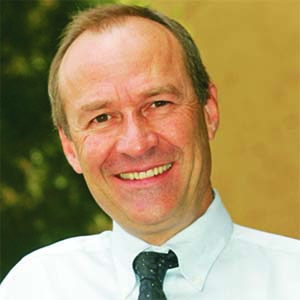In 2017, Formula One cars will be radically changed as new rules come into effect. Chassis, tyre and aerodynamic upgrades are likely to reduce lap times by five seconds or more.
 By Graham Duxbury, MD of Duxbury Networking
By Graham Duxbury, MD of Duxbury Networking
Back in the mid-1960s, F1 went through an equally fundamental change. In 1963 it was announced that from 1966 unsupercharged engines would be of 3-litres capacity, replacing the unloved 1500cc formula.
As a country with its own F1 championship, South Africa decided to lead the world and adopt the new rules a year ahead of time. So, apart from the SA Grand Prix (a world championship round at East London) all local races in 1965 were run to the new capacity limit.
As a result, the Rand GP, held in December, became the first international F1 race held in accordance with the new rules package. For the first time, South African drivers were able to acquire competitive chassis and engines and compete on equal terms with their international counterparts.
Those early heroes on the grid at Kyalami included John Love, Dave Charlton, Peter de Klerk, Sam Tingle, Jackie Pretorius and Doug Serrurier.
Almost without exception, they would go on to establish themselves as great competitors, capable of taking on the world’s best and delivering results that shook the establishment.
For example, just over a year later (January 1967) Love led the South African GP at Kyalami in his Cooper. Unfortunately, a late pit-stop for fuel dropped him to second behind Pedro Rodriguez.
Love drove some of the world’s greatest F1 cars during his long career, including the iconic Lotus 49, Brabham BT20, March 701 and Surtees TS9, on his way to six SA drivers’ championship titles.
Charlton was an equally talented driver, also with six local titles to his credit. His resume highlights drives in many famed F1 cars including a Brabham BT33, Lotus 72 and McLaren M23. He participated in 13 world championship Grands Prix.
Peter de Klerk was one of the few drivers to enter what was effectively a home-built racer in a F1 world championship event. This he did on two occasions. His Alfa Special – built in 1960 with the help of Doug Serrurier and Ernest Pieterse – was rewarded with a tenth place finish in the 1965 SA GP. Not bad for a five-year-old design.
While De Klerk also had the opportunity to pilot some of the world’s greatest F1 cars during his career – including a Brabham BT 20 with which he finished second behind world champion Jack Brabham at the memorable 1965 Rand GP – probably his greatest achievements were his drives in international sports car events, including his sixth place at Le Mans in 1966 in a “works” Porsche.
Sam Tingle, a multiple winner of the Rhodesian drivers’ championship, launched his racing career in 1947 behind the wheel of an old four-and-a-half-litre Bentley. He participated in local F1 races between 1960 and 1969 as well as in five F1 world championship Grands Prix. He competed regularly in Doug Serrurier-built LDS F1 cars.
Jackie Pretorius, one of the more colourful characters on the local F1 scene, enjoyed his best F1 year in 1971, entering a Brabham BT26A in the SA GP where he qualified one place behind Graham Hill’s “works” car and ran ahead of him in the race – until a broken camshaft side-lined him after 22 laps.
Jackie was considered good enough by Frank Williams to stand in for the injured Nani Galli in the 1973 SA GP. He drove the Williams Iso-Marlboro FX3B. Unfortunately, Jackie was forced to retire with overheating problems, but he had made his mark, racing competitively with drivers of the calibre of Peter Revson.
Doug Serrurier was the local equivalent of Jack Brabham. A renowned car constructor, he built a number of LDS (after his initials) cars which were driven successfully by himself and by many of his contemporaries. In the 1965 Rand GP he finished an excellent eighth, one place behind fellow LDS driver, Tingle. And in the non-championship SA GP in ’66, Serrurier claimed a rewarding tenth position against some of the world’s best.
While this was Doug’s last appearance on the international stage, his cars continued to represent him. Tingle competed in a Repco-engined LDS in the 1968 South African GP but engine overheating in the hot Highveld sun caused his retirement on lap 22. It was the LDS marque’s final curtain-call at international level.
In my next column, I’ll spotlight some of the members of the exclusive club of SA F1 drivers who were absent from the Rand GP of 1965. They include Tony Maggs, Neville Lederle, Ernest Pieterse, Eddie Keizan, Paddy Driver, Basil van Rooyen and, of course, the Scheckter brothers.
